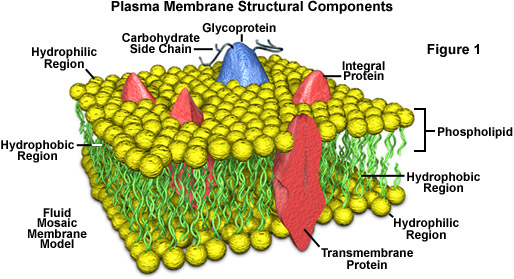

The nucleolus (also called nucleole) is a non-membrane bound structure composed of proteins and nucleic acids found within the nucleus. Ribosomal RNA is transcribed and assembled within the nucleolus. The nucleolus ultrastructure can be visualized through an electron microscope, while the organization and dynamics can be studied through fluorescent protein tagging and fluorescent recovery after photobleaching (FRAP). Malfunction of nucleoli can be the cause for several human diseases.
Structure
Three major components of the nucleolus are recognized: the fibrillar centers (FC), the dense fibrillar component (DFC) and granular components (GC). However, it has been proposed that this particular organization is only observed in higher eukaryotes and that it evolved from a bipartite organization with the transition from anamniotes to amniotes. Reflecting the substantial increase in the rDNA intergenic region, an original fibrillar component would have separated into the FC and the DFC. Another structure identified within many nucleoli, (particularly in plants) is a clear area in the center of the structure referred to as a nucleolar vacuole.
Function and ribosome assembly
Nucleoli are formed around specific genetic loci called Nucleolar Organizing Regions (NORs), first described by Barbara McClintock. Because of this non-random organization, the nucleolus is defined as a "genetically determined element." A NOR is composed of tandem repeats of rRNA genes, which can be found in several different chromosomes. The human genome for example, contains more than 200 clustered copies of the rRNA genes on five different chromosomes(13,14,15,21,22). In a typical eukaryote, a rRNA gene consists of a promoter, internal and external transcribed spacers (ITS/ETS), rRNA coding sequences (18S, 5.8S, 28S) and an external non-transcribed spacer.
In ribosome biogenesis, three eukaryotic RNA polymerases (pol I, II, III) are required which function in a coordinated manner. In an initial stage, the RNA genes are transcribed as a single unit within the nucleolus by RNA pol I. In order for this transcription to occur, several pol I-associated factors and rDNA-specific transacting factors are required. In yeast, the most important are: UAF (upstream activating factor), TBP (tata-box binding protein) and CF (core factor), which bind promoter elements and form the pre-initiation complex (PIC), which is in turn recognized by RNA pol I. In humans, a similar PIC is assembled with SLI, the promoter selectivity factor (composed of TBP and TBP-associated factors, or TAFs), IF (the transcription initiation factor) and UBF (upstream binding factor).
Transcription of the ribosomal gene yields a long precursor molecule (45S pre-rRNA) which still contains the ITS and ETS. Further processing, which involves methylation and endo/exonuclease activity is therefore needed to generate the 18S RNA, 5.8S and 28S RNA molecules. In eukaryotes, the RNA modifying enzymes are brought to their respective recognition sites through interaction with guide RNA's which bind these specific sequences. These guide RNA's belong to the class of small nucleolar RNA's (snoRNA's) which are complexed with proteins and exist as small-nucr-ribonucleoprotein (RNP) particles (snoRNP's). Once RNA is processed, the RNA molecules are ready to be assembled into ribosomes. However, an additional RNA molecule, the 5S RNA, is necessary for this biogenesis. In yeast, the 5S rDNA sequence is localized in the external non-transcribed spacer and is transcribed in the nucleolus by RNA pol III. In higher eukaryotes and plants, the situation is more complex, for the 5S DNA sequence lies outside the NOR and is transcribed in the nucleoplasm after which it finds its way into the nucleolus to participate in the ribosome assembly. This assembly not only involves the rRNA, but ribosomal proteins as well. The genes encoding these r-proteins are transcribed by pol II in the nucleoplasm by a "conventional" pathway of protein synthesis (transcription, pre-mRNA processing, nuclear export of mature mRNA and translation on cytoplasmic ribosomes). The mature r-proteins are then "imported" into the nucleolus. Association and maturation of rRNA's and r-proteins result in the formation of the 40S and 60S subunits of the ribosome. These are exported through the nuclear pore complexes to the cytoplasm where they remain free or will become associated with the endoplasmic reticulum.
A continuous chain between the nucleoplasm and the inner parts of the nucleolus exists through a network of nucleolar channels. In this way, macromolecules with a molecular weight up to 2000 kDa are easily distributed throughout the nucleolus



